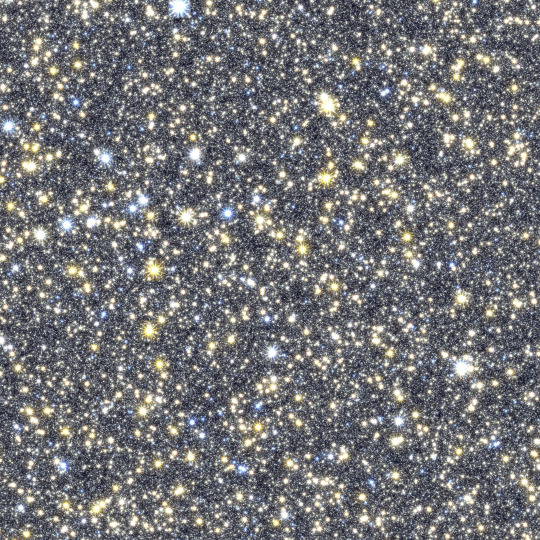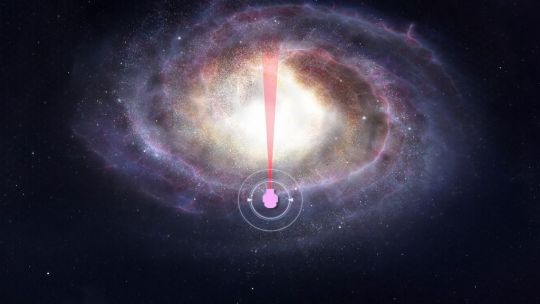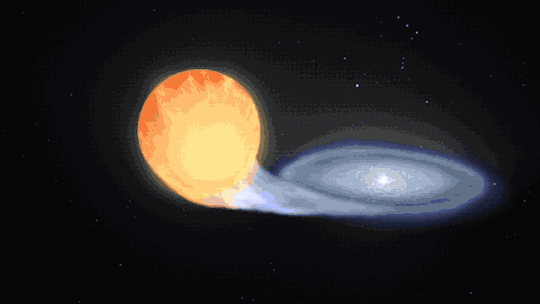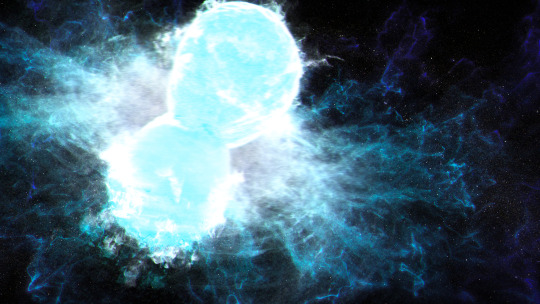#Grace Black
Text




6 notes
·
View notes
Text

Ive watched "Nerdy Prudes Must Die" about 10 times since it came out
#nerdy prudes must die#NPMD#npmd spoilers#lords in black#grace chasity#stephanie lauter#peter spankoffski#starkid#hatchetfield#doodles
5K notes
·
View notes
Text
Grace Chastity is the most character ever.
She is 18 years of age and thinks carrying books is equivalent to sex, she’s got the school bully wrapped around her finger and doesn’t even know it, she announced her desire for anal at the dinner table, she wanted to fuck the quarterback so bad she decided to ruin his social status instead and accidentally murdered him, she can bury a body well, she refuses to swear, she’s held several people at gunpoint, the first time she swore she called god a son of a bitch, her chastity is the most important thing to her, she lost her virginity to a ghost, she doesn’t even drink caffeine and instead has warm water, she consumes the souls of men after making a deal with eldritch horrors.
GASLIGHT GATEKEEP GRACE CHASTITY I GET WHY BILL WANTED ALICE TO DATE SOMEONE LIKE HER
#nerdy prudes must die#the guy who didn't like musicals#black friday#starkid#grace chasity#musicals#gaslight gatekeep girlboss
6K notes
·
View notes
Text


genuinely can't believe that these two are played by the same person
#it seriously just doesn't connect in my mind#lex foster#grace chasity#black friday#black friday starkid#nerdy prudes must die#npmd#angela giarratana#starkid#team starkid#hatchetfield#hatchetverse#🎧#1k
4K notes
·
View notes
Text

The parallels between these two haunt me.
#they both made deals with the lords in black to protect the town but their definitions of evil are so different#miss holloways been around long enough to know you can’t save everyone but she’ll never stop trying#grace’s close-minded take on humanity is a testament to her naivety and she burns with the passion of a kid who thinks she can do anything#team starkid#hatchetfield#hatchetverse#nerdy prudes must die#npmd#starkid#grace chasity#miss holloway#nightmare time#myart#fanart
4K notes
·
View notes
Text

#enisteyjia#couple#bw#dark#black and white#aesthetic#art#tommy and grace#tommy shelby#grace shelby#peaky blinders
2K notes
·
View notes
Text
No, because people keep acting like Grace Chastity being consumed with a lust for the power that Lords in Black provided her doesn't count as a world ending Cataclysm - but it very much does. Not only has she shown little to no empathy for others throughout the entire show and only ever felt bad for lying to authority figures and being horny - but the final song of the Musical is essentially a reprise of Max's Murder Song/Manifesto which places her as a parallel to Max. Max sings about how he's going to kill ALL the Nerdy Prudes and not once but twice tells the audience that it doesn't matter if someone is actually a Nerdy Prude because he makes the rules and gets to decide who is or isn't a nerd etc etc. Grace's take is that she is going to kill all the Dirty Dudes but she's literally singing it to a guy who has, throughout the entire musical, done nothing to indicate he's a pervy/dirty dude and only kissed her after she asked him too. Like Max, Grace Chastity doesn't actually care if someone genuinely fits the framework of her stated victimology, because she has the power so she gets to make the rules.

Honestly it's like some people didn't think about the implications.
#npmd#starkid npmd#starkid#nerdy prudes must die#grace chasity#max jagerman#nerdy prudes spoilers#npmd spoilers#nerdy prudes must die spoilers#the guy who didn't like musicals#tgwdlm#black friday starkid#starkid musicals#hatchetfield#hatchetverse#hatchetfield musicals#nightmare time#dirty dudes must die#starkid theory#hatchetfield theory#the implications#Promise me you'll think about the implications
3K notes
·
View notes
Text
you ppl love villains/morally grey characters UNTIL they're a woman, then all of a sudden they are annoying, evil and irredeemable
#like just say u let men get away with anything bc u want to fuck them#alicent hightower#daenerys targaryen#azula#cersei lannister#sansa stark#shiv roy#grace blackthorn#fang runin#nesta archeron#shauna shipman#camilla macaulay#catra#zoya nazyalensky#carmilla#jude duarte#jinx#bellatrix black#narcissa black#morgana pendragon#elainposting
5K notes
·
View notes
Text
really dont think under normal circumstances the lords in black wouldve accepted anything but a blood sacrifice in exchange for taking max. like either steph wouldve had to kill pete or pete wouldve had to kill steph they wouldn'tve been happy otherwise. but they were probably so fucking delighted over seeing grace fuck a ghost that they were just "you know what? Yeah. Okay. We'll allow it."
#like if shed shagged Anyone else they wouldn'tve given a shit#nerdy prudes must die#npmd#starkid#starkid npmd#hatchetfield trilogy#hatchetverse#hatchetfield#tgwdlm#black friday#starkid black friday#starkid tgwdlm#the lords in black#grace chasity#steph lauter#peter spankoffski#max jagerman#ruth fleming#richie lipschitz
3K notes
·
View notes
Text

“did it work?” yes peter it worked.
#starkid#nerdy prudes must die#grace chasity#stephanie lauter#peter spankoffski#the lords in black#npmd#npmd fanart#hatchetfield#guys this took over 8 hours#but it was worth it 💪💪
3K notes
·
View notes
Text





kukhanya.k
#south african women#black girl moodboard#black girl aesthetic#black girls are beautiful#black women#black femininity#black women in luxury#black girls in luxury#fashion#clothing#nubian goddess#nubian queen#black woman#black history month#black dress#black girl fitspo#black girl luxury#black girls of tumblr#black luxury#black people#black tumblr#black beauty#black is beautiful#wocsource#wocdaily#woc beauty#women of color#woc#grace elizabeth#wocedit
3K notes
·
View notes
Text

#melanin magic#black girl magic#queenin#brown skin beauty#ebony goddess#afro beauty#chocolate goddess#empowered black women#beautifully black#black excellence#slaying in black#black is beautiful#radiant black women#black queens#black girl joy#divine blackness#bold and beautiful#exquisite ebonies#graceful goddesses#regal black beauty
2K notes
·
View notes
Text




ugh... this sceeeeeeene 🥰
STRANGER THINGS | 4.01
#eddie munson#eddiemunsonedit#joseph quinn#josephquinnedit#jqedit#chrissy cunningham#grace van dien#hellcheeredit#hellcheersource#strangerthingsedit#hellcheer#eddie x chrissy#stranger things#userrobin#anztag#userridge#userallisyn#cinemapix#filmtvcentral#my*gifs#userthing#mediagifs#tvedit#color correcting my gifs (for days on end) in ways no one else will notice but i will#and having done so will make me happier every time i see them.#restoring his leather jacket and jeans to true black makes me happy
1K notes
·
View notes
Text

A simulated image of NASA’s Nancy Grace Roman Space Telescope’s future observations toward the center of our galaxy, spanning less than 1 percent of the total area of Roman’s Galactic Bulge Time-Domain Survey. The simulated stars were drawn from the Besançon Galactic Model.
Exploring the Changing Universe with the Roman Space Telescope
The view from your backyard might paint the universe as an unchanging realm, where only twinkling stars and nearby objects, like satellites and meteors, stray from the apparent constancy. But stargazing through NASA’s upcoming Nancy Grace Roman Space Telescope will offer a front row seat to a dazzling display of cosmic fireworks sparkling across the sky.
Roman will view extremely faint infrared light, which has longer wavelengths than our eyes can see. Two of the mission’s core observing programs will monitor specific patches of the sky. Stitching the results together like stop-motion animation will create movies that reveal changing objects and fleeting events that would otherwise be hidden from our view.
youtube
Watch this video to learn about time-domain astronomy and how time will be a key element in NASA’s Nancy Grace Roman Space Telescope’s galactic bulge survey. Credit: NASA’s Goddard Space Flight Center
This type of science, called time-domain astronomy, is difficult for telescopes that have smaller views of space. Roman’s large field of view will help us see huge swaths of the universe. Instead of always looking at specific things and events astronomers have already identified, Roman will be able to repeatedly observe large areas of the sky to catch phenomena scientists can't predict. Then astronomers can find things no one knew were there!
One of Roman’s main surveys, the Galactic Bulge Time-Domain Survey, will monitor hundreds of millions of stars toward the center of our Milky Way galaxy. Astronomers will see many of the stars appear to flash or flicker over time.
youtube
This animation illustrates the concept of gravitational microlensing. When one star in the sky appears to pass nearly in front of another, the light rays of the background source star are bent due to the warped space-time around the foreground star. The closer star is then a virtual magnifying glass, amplifying the brightness of the background source star, so we refer to the foreground star as the lens star. If the lens star harbors a planetary system, then those planets can also act as lenses, each one producing a short change in the brightness of the source. Thus, we discover the presence of each exoplanet, and measure its mass and how far it is from its star. Credit: NASA's Goddard Space Flight Center Conceptual Image Lab
That can happen when something like a star or planet moves in front of a background star from our point of view. Because anything with mass warps the fabric of space-time, light from the distant star bends around the nearer object as it passes by. That makes the nearer object act as a natural magnifying glass, creating a temporary spike in the brightness of the background star’s light. That signal lets astronomers know there’s an intervening object, even if they can’t see it directly.

This artist’s concept shows the region of the Milky Way NASA’s Nancy Grace Roman Space Telescope’s Galactic Bulge Time-Domain Survey will cover – relatively uncharted territory when it comes to planet-finding. That’s important because the way planets form and evolve may be different depending on where in the galaxy they’re located. Our solar system is situated near the outskirts of the Milky Way, about halfway out on one of the galaxy’s spiral arms. A recent Kepler Space Telescope study showed that stars on the fringes of the Milky Way possess fewer of the most common planet types that have been detected so far. Roman will search in the opposite direction, toward the center of the galaxy, and could find differences in that galactic neighborhood, too.
Using this method, called microlensing, Roman will likely set a new record for the farthest-known exoplanet. That would offer a glimpse of a different galactic neighborhood that could be home to worlds quite unlike the more than 5,500 that are currently known. Roman’s microlensing observations will also find starless planets, black holes, neutron stars, and more!
youtube
This animation shows a planet crossing in front of, or transiting, its host star and the corresponding light curve astronomers would see. Using this technique, scientists anticipate NASA’s Nancy Grace Roman Space Telescope could find 100,000 new worlds. Credit: NASA’s Goddard Space Flight Center/Chris Smith (USRA/GESTAR)
Stars Roman sees may also appear to flicker when a planet crosses in front of, or transits, its host star as it orbits. Roman could find 100,000 planets this way! Small icy objects that haunt the outskirts of our own solar system, known as Kuiper belt objects, may occasionally pass in front of faraway stars Roman sees, too. Astronomers will be able to see how much water the Kuiper belt objects have because the ice absorbs specific wavelengths of infrared light, providing a “fingerprint” of its presence. This will give us a window into our solar system’s early days.

This animation visualizes a type Ia supernova.
Roman’s High Latitude Time-Domain Survey will look beyond our galaxy to hunt for type Ia supernovas. These exploding stars originate from some binary star systems that contain at least one white dwarf – the small, hot core remnant of a Sun-like star. In some cases, the dwarf may siphon material from its companion. This triggers a runaway reaction that ultimately detonates the thief once it reaches a specific point where it has gained so much mass that it becomes unstable.
youtube
NASA’s upcoming Nancy Grace Roman Space Telescope will see thousands of exploding stars called supernovae across vast stretches of time and space. Using these observations, astronomers aim to shine a light on several cosmic mysteries, providing a window onto the universe’s distant past. Credit: NASA’s Goddard Space Flight Center
Since these rare explosions each peak at a similar, known intrinsic brightness, astronomers can use them to determine how far away they are by simply measuring how bright they appear. Astronomers will use Roman to study the light of these supernovas to find out how quickly they appear to be moving away from us.
By comparing how fast they’re receding at different distances, scientists can trace cosmic expansion over time. This will help us understand whether and how dark energy – the unexplained pressure thought to speed up the universe’s expansion – has changed throughout the history of the universe.

NASA’s Nancy Grace Roman Space Telescope will survey the same areas of the sky every few days. Researchers will mine this data to identify kilonovas – explosions that happen when two neutron stars or a neutron star and a black hole collide and merge. When these collisions happen, a fraction of the resulting debris is ejected as jets, which move near the speed of light. The remaining debris produces hot, glowing, neutron-rich clouds that forge heavy elements, like gold and platinum. Roman’s extensive data will help astronomers better identify how often these events occur, how much energy they give off, and how near or far they are.
And since this survey will repeatedly observe the same large vista of space, scientists will also see sporadic events like neutron stars colliding and stars being swept into black holes. Roman could even find new types of objects and events that astronomers have never seen before!
Learn more about the exciting science Roman will investigate on X and Facebook.
Make sure to follow us on Tumblr for your regular dose of space!
#NASA#astronomy#telescope#Roman Space Telescope#dark energy#galaxies#cosmology#astrophysics#stars#galaxy#space images#time#supernova#Nancy Grace Roman#black holes#neutron stars#kilonova#rogue planets#exoplanets#space#science#tech#technology#Youtube
2K notes
·
View notes
Text
Regulus (walking up to Remus at the bar): Why if it isn’t Sirius’ little gay werewolf. Where’s my brother? Don’t you homosexuals always travel in pairs?
James (walking up to Regulus without noticing Remus): Hey babe, sorry they didn’t have sugar free strawberries for your margarita
Remus (bursts out laughing): Well look how cute you two are. The brown stallion and my little pony.
#source: will and grace#sirius black#hogwarts#james potter#remus lupin#incorrect marauders quotes#marauders#young marauders#marauders era#wolfstar#jegulus
2K notes
·
View notes
Text
Say what you want about The Guy Who Didn't Like Musicals and Black Friday but Nerdy Prudes Must Die is truly the darkest timeline because it doesn't feature Peanuts the Hatchetfield Pocket Squirrel™️
#starkid#team starkid#nerdy prudes must die#npmd#starkid npmd#the guy who didn't like musicals#tgwdlm#black friday musical#starkid black friday#black friday#starkid musicals#peanuts the hatchetfield pocket squirrel#paul matthews#emma perkins#hannah foster#lex foster#ethan green#grace chasity#pete spankoffski#ted spankoffski#richie lipschitz#hatchetfield universe#hatchetfield#the lords in black#wiggly#webby#professor hidgens#stephanie lauter#max jagerman#ruth fleming
3K notes
·
View notes